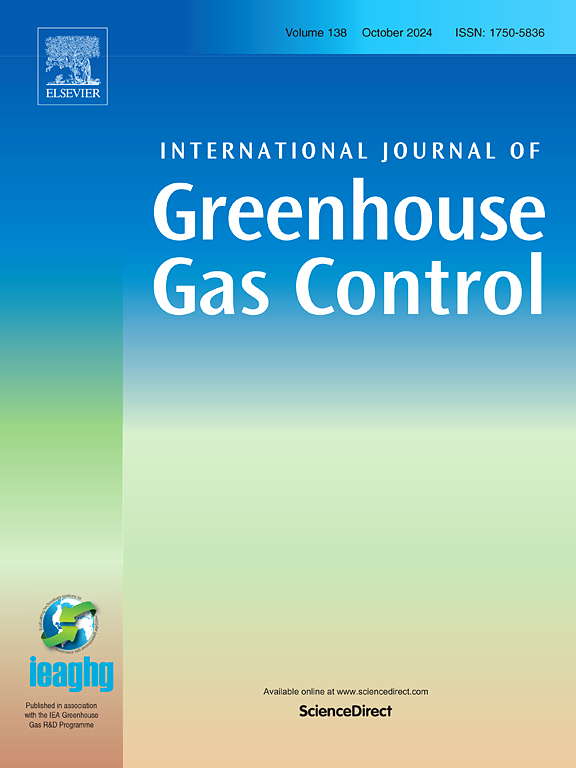从社会经济角度对直接空气捕获技术的文献综述
IF 5.2
3区 工程技术
Q2 ENERGY & FUELS
International Journal of Greenhouse Gas Control
Pub Date : 2025-07-19
DOI:10.1016/j.ijggc.2025.104438
引用次数: 0
摘要
直接空气捕获(DAC)技术是实现气候目标的重要途径。DAC的最新科学进展已经超越了工程学,进入了多学科领域。这一时刻为将DAC技术整合到社会经济系统和气候变化情景的更广泛对话中提供了最佳机会,旨在解决迅速缩小的全球排放空间。因此,在这一广泛的研究领域中,识别和弥合任何研究差距对于促进DAC的未来应用至关重要。出于这一必要性,本研究系统地分析了813份关于DAC的科学出版物,特别关注75项社会经济研究,以批判性地审查和综合他们的发现。我们从社会经济角度揭示了五大研究热点:(1)利用考虑空间、时间和参数异质性的综合评估模型模拟DAC的发展路径和需求;(ii)通过跨学科技术经济分析评估发展援助的经济学和成本;(iii)从全生命周期角度评估DAC与各种二氧化碳利用方法相结合时的社会经济影响和净碳去除效率;(四)进行DAC与新能源系统及其他利用技术集成的成本效益分析和优化建模;(五)优化DAC实施的商业模式和政策框架。标准化成本指标、预测不确定条件下的成本趋势、开展不同技术类型的生命周期评估、优化多目标协调的时空布局等是社会科学研究面临的长期挑战。我们进一步建议通过增加研发投资、政策支持和创建碳去除验证方法来推进DAC技术。本文章由计算机程序翻译,如有差异,请以英文原文为准。
A literature review of direct air capture technology from a socioeconomic perspective
Direct air capture (DAC) technology represents a crucial pathway for achieving climate goals. Recent scientific advancements in DAC have moved beyond engineering into multidisciplinary discourse. This moment presents an optimal opportunity to integrate DAC technology into broader conversations on socioeconomic systems and climate change scenarios, aiming to address the rapidly diminishing global emissions space. Therefore, it is crucial to identify and bridge any research gaps in this expansive body of studies to promote the future application of DAC. Motivated by this necessity, this study systematically analyzes 813 scientific publications on DAC, focusing specifically on 75 socioeconomic studies, to critically review and synthesize their findings. We uncover five major research hotspots in a socioeconomic perspective: (i) simulating DAC development pathways and demand using integrated assessment models that account for spatial, temporal, and parametric heterogeneity; (ii) evaluating DAC economics and costs through cross-disciplinary technoeconomic analyses; (iii) assessing the socioeconomic impacts and net carbon removal efficiencies of DAC when integrated with various CO₂ utilization methods from a full life cycle perspective; (iv) conducting cost–benefit analysis and optimization modeling of DAC integration with new energy systems and other utilization technologies; and (v) optimizing business models and policy frameworks for DAC implementation. Persisting challenges in social science research include standardizing cost indicators, forecasting cost trends under uncertainty, conducting life cycle assessments across differing technology types, and optimizing spatiotemporal layouts for multi-objective coordination. We further recommend advancing DAC technology through increased investment in R&D, policy support, and the creation of methodologies for carbon removal verification.
求助全文
通过发布文献求助,成功后即可免费获取论文全文。
去求助
来源期刊
CiteScore
9.20
自引率
10.30%
发文量
199
审稿时长
4.8 months
期刊介绍:
The International Journal of Greenhouse Gas Control is a peer reviewed journal focusing on scientific and engineering developments in greenhouse gas control through capture and storage at large stationary emitters in the power sector and in other major resource, manufacturing and production industries. The Journal covers all greenhouse gas emissions within the power and industrial sectors, and comprises both technical and non-technical related literature in one volume. Original research, review and comments papers are included.

 求助内容:
求助内容: 应助结果提醒方式:
应助结果提醒方式:


